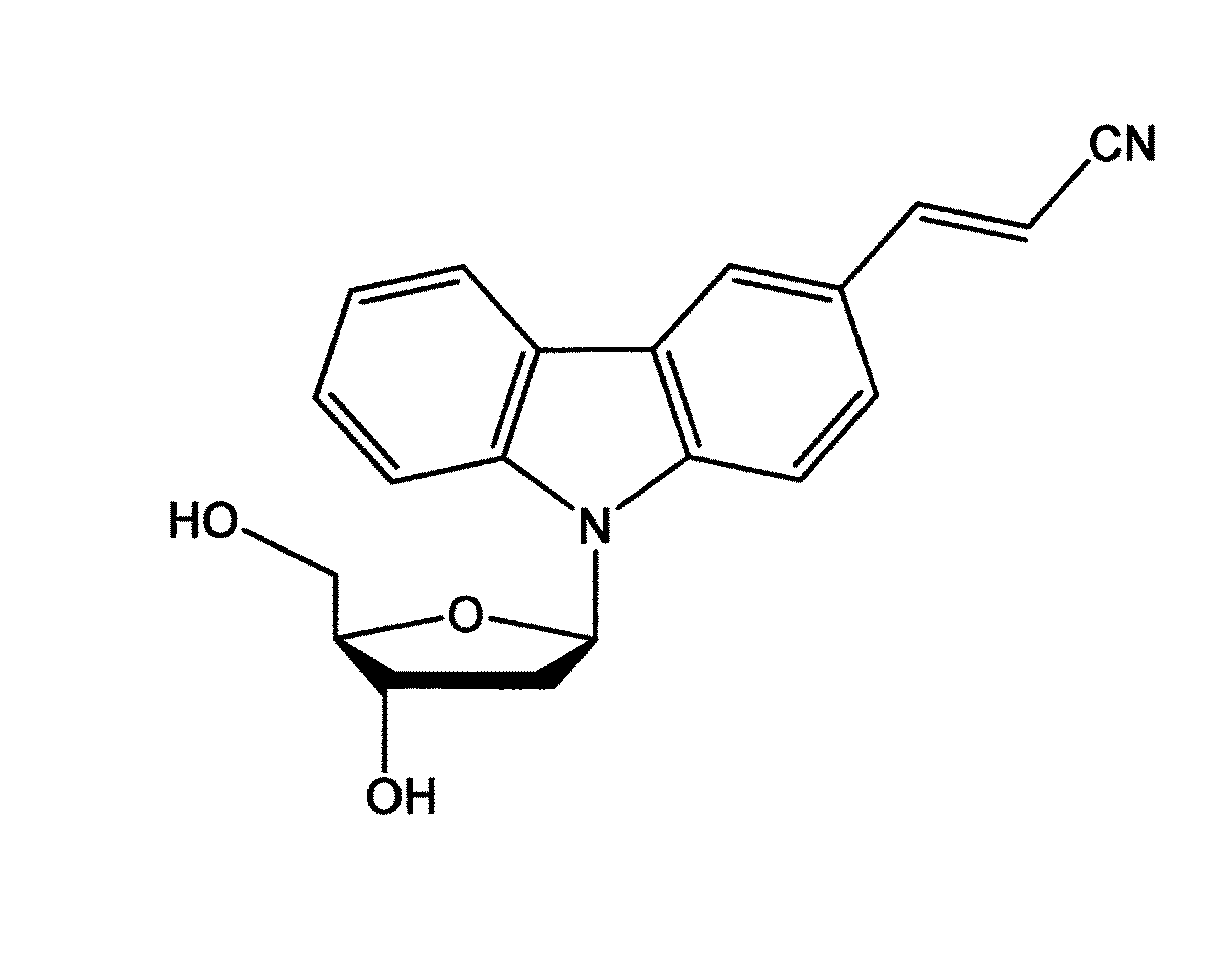Inhibition method of nucleic acid amplification by photoirradiation and method of selective nucleic acid amplification with high sensitivity
a nucleic acid amplification and photoirradiation technology, applied in specific use bioreactors/fermenters, biomass after-treatment, biochemistry apparatus and processes, etc., can solve the problem that the design of probes and primers is often difficult for some gene sequences, and the current mutation detection testing for cancer is limited by strict limitations, so as to achieve rapid detection and detection. , high specificity
- Summary
- Abstract
- Description
- Claims
- Application Information
AI Technical Summary
Benefits of technology
Problems solved by technology
Method used
Image
Examples
example 1
Evaluation of Inhibition of PCR Amplification with Respect to Wild-Type Gene
(Materials and Methods)
1. Preparation of Photo-Crosslinking Clamp Probes
[0138]Mutation points Gly12 and Gly13 on a KRAS gene were selected as the target site, and a clamp probe complementary to the sense chain capable of hybridizing with the target site having the wild-type sequence was designed. Similarly, a clamp probe against the antisense chain was designed. A photo-crosslinking nucleic acid, 3-cyanovinylcarbazole-1′-β-deoxyriboside (CNVK) (Prepared by a method described in JP 2009-254279 A. Obtained from Fujimoto lab., School of Materials Science, Japan Advanced Institute of Science and Technology), was introduced to the clamp probes at the sites where the clamp probes were not photo-crosslinked with each other. The synthesis of the clamp probes was entrusted to FASMAC Co., Ltd. The sequences of the clamp probes are shown in Table 1. The structural formula of CNVK is shown in FIG. 1.
[0139]
TABLE 1Clamppr...
example 2
Evaluation of Inhibition of PCR Amplification with Respect to Mutated Gene
(Materials and Methods)
1. Preparation of Mutated KRAS Gene Fragment
[0148]The mutation of Gly12Ser was introduced, using PrimeSTAR (registered trademark) Mutagenesis Basal Kit (Takara-Bio), into the wild-type plasmid prepared in Example 1. That is to say, the 34th base “G” of the Kras gene was changed to “A” by the method. Hereinafter, this was used as the mutated plasmid. This plasmid was used as a template to perform amplification using the primer set of F1 and R1 described in Example 1-2 under conventional PCR reaction conditions, to obtain a linear Kras mutated gene fragment. The resulting DNA fragment was purified using a PCR Purification Kit (Qiagen), and was used as a template in the following experiments.
2. Photo-Crosslinking Reaction of Clamp Probes with Mutated KRAS Gene Fragment
[0149]To 1.5 mL tubes, 2 μL of 1 nmol / L mutated KRAS gene fragment, 2 μL of 10 μmol / L ODN09, and 2 μL of 10 μmol / L ODN10 wer...
example 3
Confirmation of Selective Amplification of Mutated Nucleic Acid
(Materials and Methods)
1. Preparation of KRAS Wild-Type and Mutated Mixture Sample
[0153]The KRAS wild-type and mutated gene fragments respectively prepared in Examples 1 and 2 were mixed at a ratio of 99:1 to prepare a 107 copies / μL KRAS gene mixture sample.
2. Photo-Crosslinking Reaction with Clamp Probes
[0154]To 1.5 mL tubes, 2 μL of the mixture sample prepared, as well as 2 μL of 10 μmol / L ODN09 and 2 μL of 10 μmol / L ODN10 as clamp probes, were added, and adjusted to a total volume of 20 μL, at a final concentration of 1×PCR buffer. The sequences of the clamp probes were the same as those described in Example 1. The photo-crosslinking reaction was performed under the same conditions as those described in Example 1-3.
3. PCR after Photo-Crosslinking Reaction, and Cloning of PCR Product
[0155]To 20 μL of each photo-crosslinking reaction liquid obtained above, 80 μL of sterile water was added, and 5 μL of an aliquot from ea...
PUM
| Property | Measurement | Unit |
|---|---|---|
| wavelength | aaaaa | aaaaa |
| wavelength | aaaaa | aaaaa |
| single wavelength | aaaaa | aaaaa |
Abstract
Description
Claims
Application Information
 Login to View More
Login to View More - R&D
- Intellectual Property
- Life Sciences
- Materials
- Tech Scout
- Unparalleled Data Quality
- Higher Quality Content
- 60% Fewer Hallucinations
Browse by: Latest US Patents, China's latest patents, Technical Efficacy Thesaurus, Application Domain, Technology Topic, Popular Technical Reports.
© 2025 PatSnap. All rights reserved.Legal|Privacy policy|Modern Slavery Act Transparency Statement|Sitemap|About US| Contact US: help@patsnap.com



